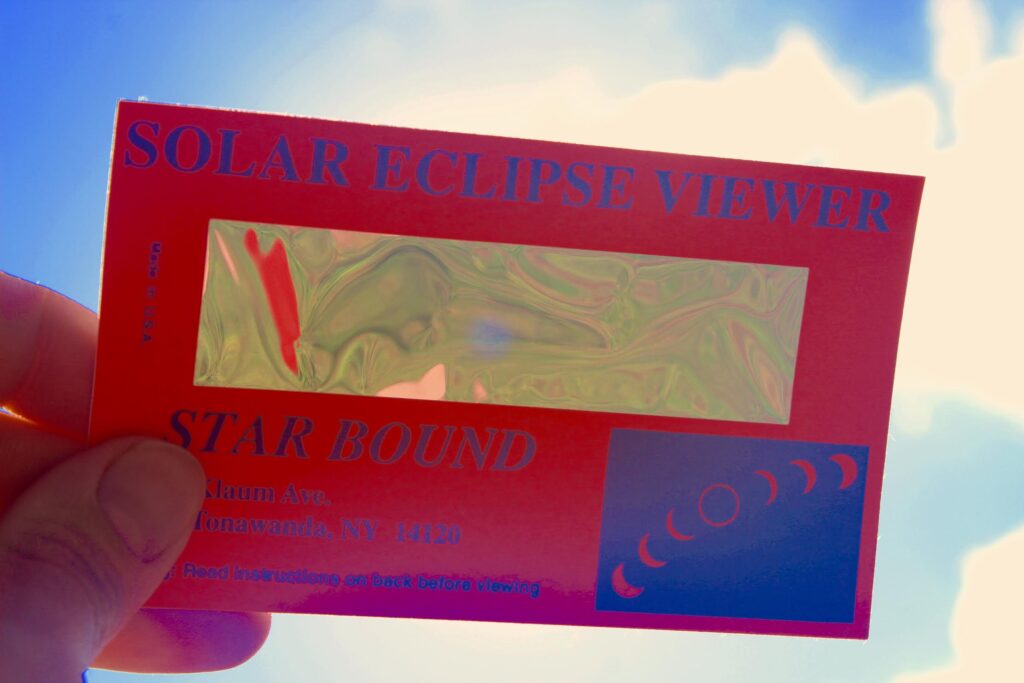Featured
UM Astronomy Professors Weigh In On Eclipse Myths & Safety Tips

Dr. Torma explaining the cause of the total eclipse with a diagram. The large red circle is the sun, the blue circle is the moon and the black circle is the earth.
On Monday, August 21, the moon will pass through the direct glare of the sun and cause a total eclipse to be visible across the United States. While this is a rare spectacle for those living in the path of the eclipse, the sun will only be seen partially covered in Oxford, Mississippi.
There are serval myths orbiting around online regarding the nature of the eclipse. To help
spread light on the subject, UM Astronomy professors explained the cause of the eclipse and also provided safety advice for viewers.
Myth #1: A total eclipse is a rare event.
When the moon’s orbit aligns with the earth at a close enough distance, the moon can
temporally block out the sun. Astronomers say there is about one eclipse per year, but it usually falls in an area that is not very populated like Antarctica. Not since 1979 has a total eclipse passed through a populated area in North America.
Myth #2: The total eclipse can be seen from anywhere on earth.
The path of totality refers to the 70-mile wide trail the shadow of the moon will follow across the earth. The path, which will decline in a southeast direction, will make landfall at 10:16 a.m. in Oregon and return to sea at 4:48 p.m. off the coast of South Carolina. The total eclipse will only be seen within this path.
“People who are interested in seeing the total eclipse should drive somewhere else see it,”
Dr, Tibor Torma, Director of Kennon Observatory, said. “You can expect high traffic early that morning.”

Dr. Torma shows an example of the special eclipse filtered eye glasses one should wear for viewing the eclipse.
The closest city on the line of totality is Nashville, Tennessee. While it might be worth the
drive, the eclipse will only last for a few short seconds.
“If you go see the total eclipse bring your binoculars,” Dr. Don Summers, astronomy
professor, said. “You can see that the sun has gas rays shooting out, but you can only see it if the sun is totally eclipsed.”
Myth #3: Watchers are guaranteed to see something unusual happening with the sun during an eclipse.
While that may be true in some ways, no one can be sure what will happen during the
eclipse. Factors such as the weather can obstruct viewers from seeing the partial coverage.
“There is a less than 30 percent chance we will see anything because of the weather,” Torma said. “You never know. Living close to the Gulf makes cloudiness unreliable.”
If the weather cooperates, citizens of Oxford will experience a 90 percent coverage of the sun around 1:30 p.m. The presence of the moon partially obscuring the sun will cause the sky to become darker, but it should be brighter than dusk.
“A partial eclipse is not a big deal,” Torma said. “The important part is in the path of totality
which will not be going through Oxford.”
Myth #4: An eclipse is not dangerous to look at.
The darkness is partly to blame for the dangers of watching an eclipse. In response to the
change in light, the human eye’s pupil expands to let in more light. During an eclipse, the parts not covered by the sun are still too bright to look at directly, which can damage the viewer’s eyes.

NASA Safety Tips. Courtesy of Nasa.gov
“If you were in Nashville, it would be okay to see the eclipse, but once the moon begins peaking away, you would have to use a filter,” Summers said.
To protect curious eyes from the sun’s harmful rays, professionals advise using special
eclipse viewing glasses and filters to look through.

An eclipse filter is also a useful tool for viewing the eclipse. The small light blue circle on the screen is the sun, safe to view with the human eye.
Ole Miss students can get in on the action on their first day of class, at a viewing station
sponsored by the J.D. Williams Library. The tent will be open from 11:30 a.m. to 3 p.m. and will offer pin-hole projectors and eclipse glasses for protection.
The Department of Physics and Astronomy will also host a viewing station near the James
Meredith Statue from noon to 3 p.m. This station will allow students to observe the partial
eclipse through the department’s filtered telescopes. Both events will be free to the public.
Allen Brewer is an intern for HottyToddy.com. He can be reached at allen.brewer@hottytoddy.com.





























